|
|
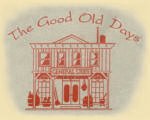 |
Clark County Press, Neillsville, WI October 4, 1995, Page 32 Transcribed by Dolores (Mohr) Kenyon. Index of "Oldies" Articles
|
|
|
 |
Clark County Press, Neillsville, WI October 4, 1995, Page 32 Transcribed by Dolores (Mohr) Kenyon. Index of "Oldies" Articles
|
Good Old Days
“Oldies”
By Dee Zimmerman
Mother’s Apron
Thinking of my mother … she always wore an apron, as it was very much a part of her daily life.
Aprons came in various styles and fabrics. The style to be worn depended upon the wearer’s preference or for the tasks that would be undertaken. There were styles that nearly covered the entire dress such as the coverall and cobbler, slipped over the head. The bib style also slipped over the head and had two sash ties that were tied at the back. Half aprons were used when entertaining guests, more frilly and of finer fabric.
Mom’s dresser drawer held a variety of aprons – ginghams, percales, plaids, or floral patterns as well as a couple of sheer lawn fabrics in a rainbow of colors.
One of mom’s evening pastimes was sewing aprons on her treadle sewing machine. Often when she went to town shopping, she would scan the material remnant table at the department store. She would find a fabric, a yard or less, priced from 10¢ to 25¢ each. As she prepared to sew, the materials scrap box kept in the spare closet was brought out and gone through in search of fabric to go with what she had purchased. She coordinated colors before we used the word or knew what it meant. Rick-rack or bias tape, were added around the outer seams and pocket. Gingham aprons were decorated with chicken-scratch embroidery for a “dressy look.” Many of mom’s apron creations were given as gifts to friends or relatives.
Do you remember the endless uses for aprons?
As mom walked past the garden after doing morning barn chores, she would take time to look at the vegetables: Choosing one to pick for that day’s noon meal. She would gather up the corner of her apron making a carrier for the string beans (now we call them green beans), peas, carrots or whatever veggies she had decided upon to carry back to the kitchen.
An evening stroll past the hen house reminded mom to take a second look into the nests. The late in-the-day layers would yield about a dozen eggs which she would gather and carry back in her apron.
In the spring when the setting hens were hatching their broods, mom would pick up the early hatched chicks, put them in her apron so the hens wouldn’t become confused, leaving the nest too soon not waiting for the remaining eggs to hatch.
The chicks were taken to the house, kept in a cardboard box and set by the cook stove for warmth until they could be returned to the hen.
Mixing up a batch of cookies, kneading bread dough and other baking or cooking projects required wearing an apron. If a pot holder wasn’t within reach, mom would fold over her apron and use that to remove a hot pan from the stove.
The Duchess Apple tree’s first fruits of the season were picked and transported in mom’s apron which held enough apples for a large pie.
Often an apron substituted for a hand towel, very convenient for drying wet hands.
We would take a hike in the farm’s wooded acres after frost looking for dried flowers, weed and wild berries, colorful tree leaves, acorns or whatever could be used to make up decorative arrangements. Mom’s apron carried the more delicate items while we kids hauled the rest in containers.
During fly season Mom’s apron made a good “fly shoo-er.” Too many flies got into the kitchen, sneaking in whenever the screen door opened. Mom would announce, “It’s time to get these flies out of the house.” I would use a dishtowel, mom would take her apron off and waving them in the air we would herd the flies toward the back door. One of my younger brothers would hold the screen door handle on the back porch, ready for the command, “Ok, open the door” as we would get the flies through the doorway. Two or three such drives were made to rid the kitchen of the pests.
The sound of a car coming up the farm driveway went mom to the south window to see who was coming to visit us. The next move was to take her apron off and hang it on the hook mounted on the inside of the back door. She wanted to look presentable as she went outdoors to meet the visitors.
Whenever one of my brothers or I got hurt while playing, we ran to mother. The crying was an alarm; someone would be looking for comfort. As mom wiped away the tears with her apron, the pain seemed to subside immediately.
And wedding in our farming neighborhood included a large reception with the entire community being invited. Teenage girls were asked to serve as waitresses for the noon and evening meals on the wedding day. Frilly lawn aprons were made up in same colors as the bridesmaids’ dresses, the bride’s gift for the waitresses and to be worn while serving at the reception.
As some young adults or teenagers left home, they had difficulty breaking away from parents and home setting. There was an expression derived from that, “Yah, that young fella is still tied to his mother’s apron strings,” or it may have been “young gal.”
Some of mom’s aprons are still in my possession – as I occasionally take them out of the drawer, many memories come to mind. Each apron is refolded and placed back in the drawer, too precious to part with; besides, I may wear aprons again some day.
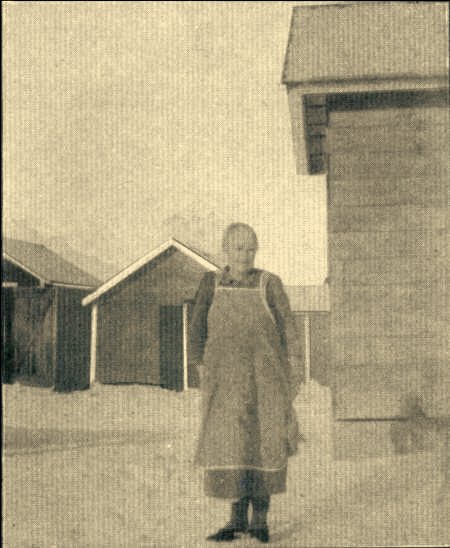
|
A farm wife of the 1930’s Mrs. Belter, wearing an apron typical of that era. Belter’s lived on Cty. G; northwest of Neillsville. (Photo courtesy of Mrs. Belter’s daughter, Ruth Ebert.) |
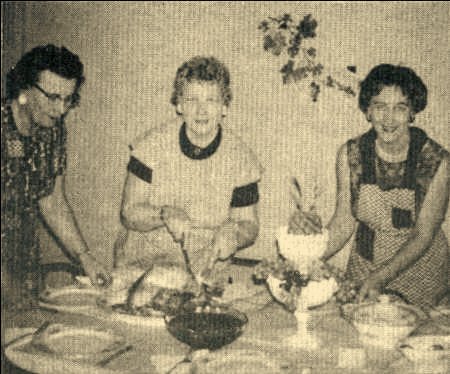
|
A family gathering in 1963: Buddy Langreck, right, with sisters, left to right, Alice and Nellie |
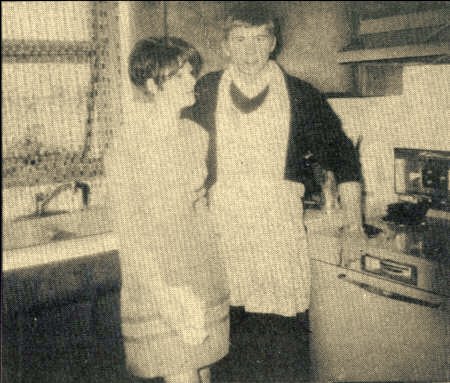
|
Occasionally, men put on aprons when they helped in the kitchen: Kevin Langreck and friend Terri had helped with entertaining duties. |
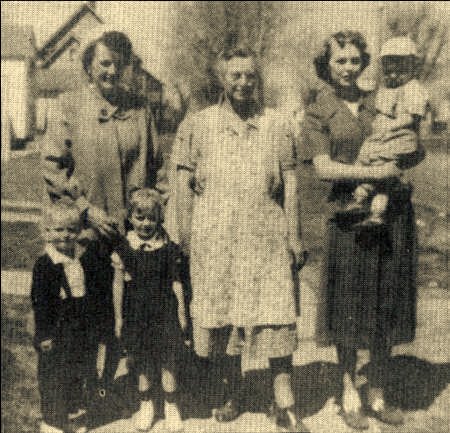
|
Elizabeth Langreck, center, with daughters, Adeline Pollnow, left and Roceil Kiefer, right, holding son Ronnie Kiefer. Grandchildren, Kevin and Kaila Langreck, standing in front row. Photos contributed by Larry and Buddy Langreck) |
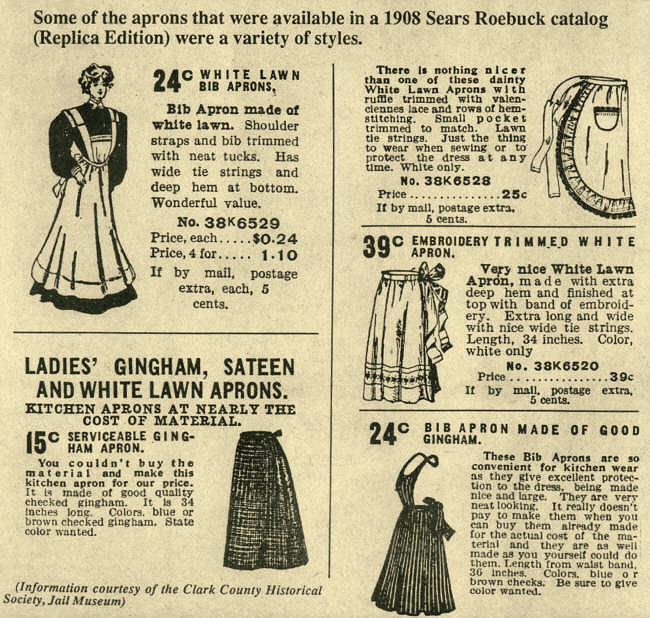
|
© Every submission is protected by the Digital Millennium Copyright Act of 1998.
Show your appreciation of this freely provided information by not copying it to any other site without our permission.
Become a Clark County History Buff
|
|
A site created and
maintained by the Clark County History Buffs
Webmasters: Leon Konieczny, Tanya Paschke, Janet & Stan Schwarze, James W. Sternitzky,
|